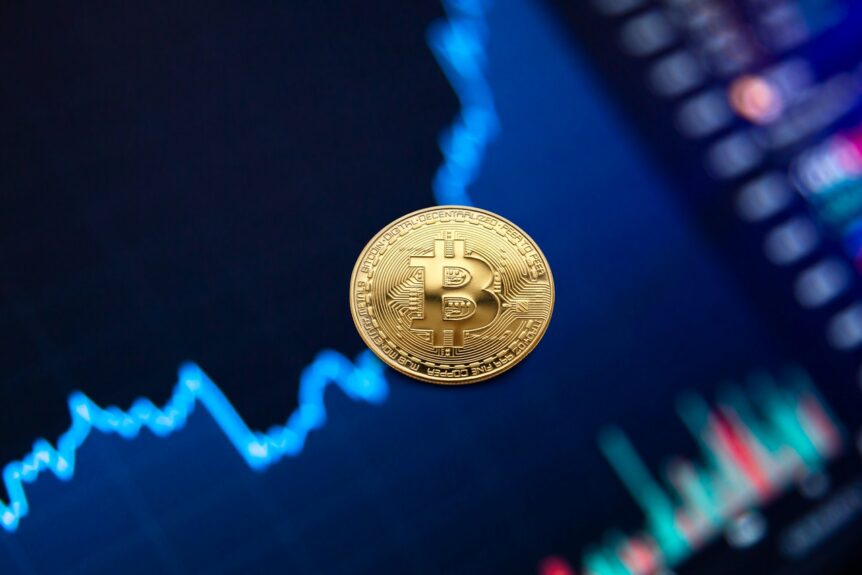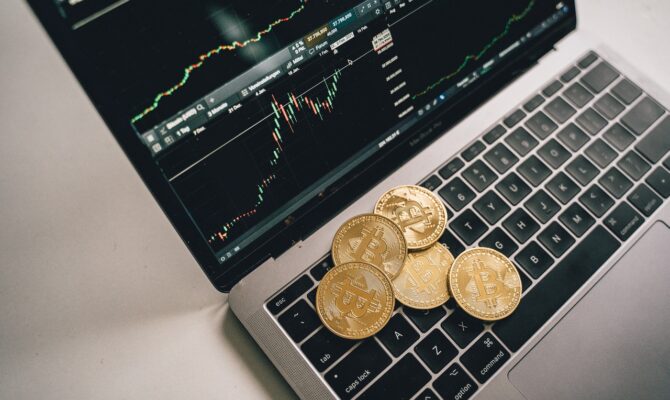
As longtime readers know, we here at DWG prefer a “buy and hold” or so-called ‘HODL’ investment strategy, especially regarding Bitcoin. However, we would be remiss to ignore other strategies completely and would like to discuss how day trading crypto can be lucrative (yet risky!) and could be a better fit for some investors than stocks. The gatekeeping surrounding the ability to trade stocks does not exist with crypto, making it an attractive option for many. Cryptocurrency is also a newer market, which leaves it ripe for potential. So advantages are there.
Day trading cryptocurrency does have advantages over trading stocks. These include:
The digital landscape is open to all, regardless of race, class, gender, or economic status. It is a game-changer for those typically excluded from wealth-creating opportunities. People have achieved real financial freedom through cryptocurrency. But like any endeavor, the odds of success grow with education and awareness, and of course, we’re always happy to help you reach your financial goals.
Cryptocurrencies, like stocks, come in a wide variety. Some cryptocurrencies are better suited to day trading than others. Also, like trading stocks, there is more than one way to trade cryptocurrencies. The day trader’s style or strategy will make some cryptocurrencies more attractive than others. Again, it is all dependent on research.
Research is essential for putting together any financial plan, regardless of whether an investor uses a “buy and hold” (HODL) strategy, day trading, or a mixture of both in a diverse portfolio. A solid, well-thought-out plan increases financial success and limits regret. This is true for stocks or cryptocurrency.
However, there are similarities between trading cryptocurrency and stocks, but there are substantial differences. When these eight differences are capitalized upon correctly, they can be an essential tool for your overall investment strategy.
The cryptocurrency market never closes. Crypto investors and traders access the market at a time that works for them. Alternatively, the stock market has hours that favor an elite few by design and leave the rest scrambling or entirely left out.
The cryptocurrency 24/7 model has been a significant advantage to working parents, especially single parents. It allows people to focus on their financial goals when they have time and not feel forced to choose between other obligations.
Not everyone is a fan of the cryptocurrency market’s refusal to sleep. The US stock market’s most popular trading times are 9:30 am – 10:30 am US Eastern Time (11:30 pm – 12:30 am on the East Coast of Australia). This traditional time frame provides patterns that make it easier for stock traders to make predictions and maneuver accordingly.
The cryptocurrency market is far less predictable. However, human beings are creatures of habit, and data crunchers have found specific trends. For example, the best day of the week to buy crypto is often a Thursday, followed by Monday (don’t ask us why!). The most popular time of the month to sell is often the second half. But not always.
The cryptocurrency market doesn’t have gatekeepers, making it accessible to anyone who wants in. This digital landscape is decentralized, and there are no suits that toss red tape in the way, assessing your worthiness to join. The ability to take control of your financial future and invest in wealth creation is accessible in the crypto market regardless of race, class, and gender.
Nor does the cryptocurrency market require a hefty chunk of your capital to take part. Some cryptocurrencies are inexpensive, costing well under one Aussie dollar. People who can only invest a few dollars a month into the crypto market can do so. While that currency’s value will fluctuate, no bank is eating away at the investment in monthly fees.
Not everyone is a fan of the cryptocurrency market’s accessibility. They believe it allows people with too little knowledge to enter the market, which means they might lose money that they cannot afford to lose.
Indeed, there is no entrance exam to enter the crypto market. It is also true that people can and do lose money. However, as the Great Financial Crisis of 2008 proved, the ‘experts’ on Wall Street are more than happy to take the world economy down in a blink, impacting people who had never owned a single stock. Limiting access to a market has not protected people who can’t afford to lose.
However, at DWG, we, like most advisers on the cryptocurrency market, always tell people only to invest what they can afford to lose. We encourage education before entering the market. But thankfully, that education does not require a fancy degree but access to the internet and making time to learn about the cryptocurrency market.
The cryptocurrency market is relatively new and volatile, making it risky and ripe for potential gains. This is attractive to day traders of crypto as significant swings in price create opportunities to trade more often. As a result, there is more room for growing future wealth in this digital landscape. We would be remiss not to mention (again!) that over the long run, though, a buy-and-hold strategy has shown to work best. But to each her own.
The cryptocurrency market’s potential for significant gains does come with a caveat that this can also mean high potential losses. The market is volatile, and just as people may have watched their investment skyrocket in an hour, they’ve also witnessed the opposite.
Over the long run, cryptocurrencies such as Bitcoin have appreciated despite the spikes and drops. Those implementing a HODL strategy have seen their investment increase in value (several-fold). But day trading crypto increases the volatility of your returns, leaving you much more financially and psychologically exposed.
The cryptocurrency market is very transparent. The code on which blockchains are built is open-sourced and can be viewed and reviewed quickly. While actual identities of traders are private (see next point), transactions are made publicly and are traceable. Balances are visible, so there is assurance that a buyer or seller has what they claim to own.
The transparent and open nature of the crypto market prevents most gatekeeping. In traditional markets, information of this nature (price, company information) typically comes at a cost and is rarely free. Even checking your credit score is cumbersome and has a cost to it! Thankfully the cryptocurrency market does not have these obstacles: if an investor has the know-how, the information on the blockchain is accessible to all.
We can’t think of many if any at all. Typically, the more transparency that any market possesses, the better. One caveat is that since crypto is so transparent, it needs to be more secure than traditional markets, and this comes at a cost, mainly speed. Crypto is not fast since, by nature, secure it takes time. Although for some this may be looked at as a disadvantage to its transparency, it is certainly not a deal-breaker.
Despite the cryptocurrency market’s transparency, privacy is also paramount (this is why crypto is so revolutionary!). How private an investor or trader wishes to be is a personal choice, and there are various methods to increase your privacy; however they are beyond the scope of this article.
Cryptocurrency’s privacy has led to concerns about so-called “dark money” and sinister organizations using it to hide their wealth from law enforcement. However, traditional finance and fiat money dwarf crypto in this regard, and crypto, by and large, is far cleaner and more transparent than conventional markets. It’s a plain fact that cash is difficult to trace, whereas crypto’s traceability is built-in to the blockchain. Even if an investor falls for a scam, they can see where their coin or NFT went after they’ve lost ownership. However, there are no easy legal means to get it back nor necessarily identify the actual human being behind the scam.
The cryptocurrency market’s relative youth means there are not many experts around; even those touting to be experts rarely are. Therefore, being the new investor on the block doesn’t leave you at such a disadvantage as in the stock market, where large trading firms have spent billions on resources such as small armies of analysts, mega-servers, and algorithms built by Nobel-prize-winning physicists. On the contrary, by utilizing easy-to-access and affordable education, you can be as knowledgeable as most participating in the crypto world.
Some crypto investors want to take part in this opportunity but don’t have the time or mental bandwidth to jump into this market and learn the ins and outs, so they miss out. The lack of a cadre of crypto experts means many investors either miss out or make terrible mistakes with their hard-earned money.
Not to blow our own horn, this is why here at DWG, we are committed to breaking down the language of crypto so that you experience minimal risk and see profitable returns.
The cryptocurrency market doesn’t have the high fees and commission charges as those associated with trading stocks. In fact, in a head-to-head comparison, there are minuscule mining fees, and the exchange you pick will have some miniature trading and transacting fees.
Crucially, trading cryptocurrency is free of annual fees. The Office of Investor Education and Advocacy put together a bulletin, How Fees and Expenses Affect Your Investment Portfolio. The bulletin explicitly warns that while the fees appear minuscule at first, these costs “have a major impact on your investment portfolio as the years go by.”
In the bulletin’s example, a 20-year investment will cost 28,000 US dollars if it has a 1% annual fee. In addition, the investor lost the earning potential of those 28,0000 dollars, thus technically losing an additional $12,000. Thus, $40,000 of potential wealth has been lost to the seemingly nominal annual fee of 1%.
It can be hard to fathom, but not everyone thinks cryptocurrency’s low fees are favorable. They argue that the stock market has many more regulations (true) and that the fees are partly used to pay to meet these regulations, so the fees are there to ensure investors are protected.
We leave it to you and your money to decide if you agree with this logic or not.
The stock market has trade limits, some explicitly stated in the policy. These limits can control how much money can be shifted in a day, the number of trades, or both. It’s also not a secret that you can remove these limits using the ‘pay-to-play’ policy, where the more money you have, the greater your access to more lucrative markets.
With crypto, centralized (and decentralized) exchanges cannot limit or reverse your trades. This may sound intuitive, but this is not the case in the traditional markets. Just recently, the so-called ‘investor friendly’ stock trading app Robinhood demonstrated just how much control they yielded when they blocked users of their app from trading a particular stock to save large trading firms who had taken the other side of the trade was losing money.
The cryptocurrency market doesn’t have limits like this, and indeed no exchange, no matter how large, can reverse transactions made on the blockchain. Of course, some exchanges might have limits regarding how much you can trade (i.e., as much cash as you have), and we advise doing your own research before doing business with such platforms. But in the digital landscape, the ethos is that it is your money to manage how you best see fit.
Defenders of Robinhood’s notorious actions in January 2021 claim the trading ban on their users was necessary to prevent small investors from losing more money in unwise investments. However, as we mentioned, it was the opposite. In comparison, the cryptocurrency market allows people to trade without limits, which could create financial losses if not managed properly.
It’s your money; we’ll let you be the judge of this one.
Day trading crypto is a different environment from trading stocks. It is less exclusive, open at all hours, and has fewer fees and regulations. Neither market has guarantees; for every success story, there is another that ended in a loss. But the more you educate yourself in the crypto market, the less vulnerable you’ll be. Should you want more information, we’re always happy to help.

Mainstream media loves to print headlines predicting a Bitcoin crash. They harp on cryptocurrencies being a volatile market as if…

Regardless of one’s level of education, profession, or socioeconomic standing, it is vitally important in the 21st century to educate…

You may have heard about the launch of EDX Markets, a brand new, centralised exchange backed by some of the…
Register for the FREE 90 minute
Crypto Training